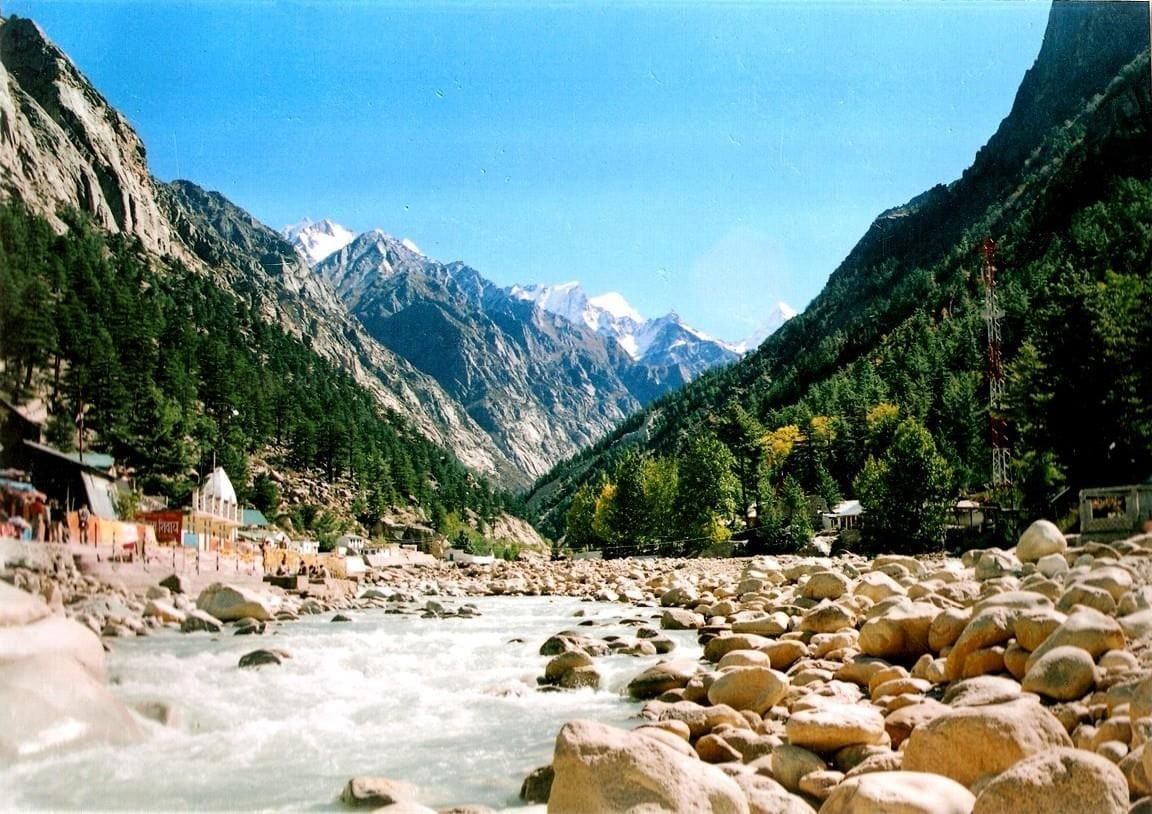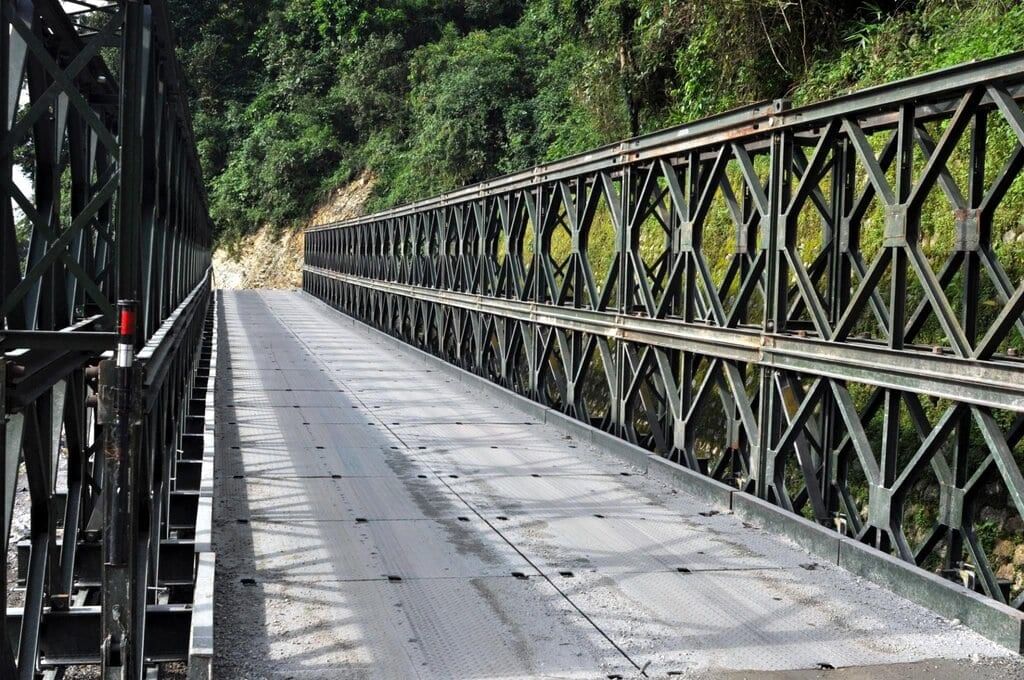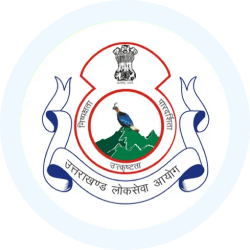UKPSC Monthly Current Affairs: June 2025 | Monthly Current Affairs UKPSC - UKPSC (Uttarakhand) PDF Download
Steering Committee Meeting of Project Elephant
Why in News?
The 21st Steering Committee Meeting of Project Elephant took place at the Indira Gandhi National Forest Academy (IGNFA) in Dehradun, chaired by Union Minister Bhupender Yadav. The meeting aimed to address the critical issue of human-elephant conflict and reviewed ongoing initiatives, including action plans for conflict management. Emphasis was placed on involving local communities in conservation efforts.
Key Points
Elephant:
- The elephant is recognized as India’s Natural Heritage Animal.
- Elephants are a “Keystone Species” due to their vital role in maintaining the balance and health of forest ecosystems.
- Known for their exceptional intelligence, elephants have the largest brain size of any land animal.
- Western Ghats: The Indian elephant (Elephas maximus) is found in the central and southern Western Ghats, Northeast India, eastern India, and parts of northern and southern peninsular India.
- Convention on International Trade in Endangered Species of Flora and Fauna (CITES): Asian elephants are included in Schedule I of the Indian Wildlife (Protection) Act, 1972, and in Appendix I of CITES.
- IUCN Red List: Asian elephants are classified as Endangered on the IUCN Red List due to habitat loss, human-elephant conflict, and poaching.
Project Elephant:
- Launched by the Government of India in 1992 as a Centrally Sponsored Scheme.
- Objectives include:
- Protecting elephants, their habitat, and corridors.
- Addressing issues of human-animal conflict.
- Ensuring the welfare of captive elephants.
- The Ministry of Environment, Forest and Climate Change provides financial and technical support to major elephant range states through Project Elephant.
Shivalik Elephant Reserve in Uttarakhand:
- Established in 2002 as part of Project Elephant.
- Known for having one of the highest densities of elephants in India.
- Encompasses several protected areas, including Rajaji National Park, Corbett Tiger Reserve, and Sonanadi Wildlife Sanctuary.
World Elephant Day:
- Observed annually on 12th August to raise awareness about the conservation status and challenges faced by Asian and African elephants in the wild.
- In 2025, the celebration will take place in Coimbatore, Tamil Nadu, where the prestigious Gaj Gaurav Awards will be presented to honor contributions to elephant conservation.
Uttarakhand's First Yoga Policy

Why in News?
On the 11th International Yoga Day, the Chief Minister of Uttarakhand introduced the state's inaugural Yoga Policy in Bhararisain, the summer capital of Uttarakhand.
During this event, the Chief Minister also announced the establishment of 'Spiritual Economic Zones' in the Garhwal and Kumaon regions.
Key Features of Uttarakhand's First Yoga Policy
- Objective: The policy aims to position Uttarakhand as the global hub for yoga and wellness.
- Vision: It promotes the idea of 'Yoga in Every Home, Health for Every Person,' with backing from the Central Government.
- Financial Support: The policy offers subsidies of up to Rs 20 lakh for setting up yoga and meditation centers. Research activities in yoga and naturopathy can receive grants of up to Rs 10 lakh.
- Implementation Goals: By March 2026, yoga services are expected to be available at all AYUSH Health and Wellness Centres in the state. Additionally, five new yoga hubs are planned to be established by 2030.
- Spiritual Economic Zones: These zones are intended to be developed as international centers for Ayurveda, yoga, and spiritual tourism. The aim is to create new job opportunities within the state and reduce migration from hill regions by providing local livelihoods.
International Yoga Day
- Purpose: International Yoga Day is observed globally to raise awareness about the benefits of yoga for physical, mental, and spiritual well-being and to promote global harmony and peace through yoga practice.
- Origin: The idea of International Yoga Day was proposed by India at the UN General Assembly in 2014, and 21st June was declared as the International Day of Yoga. The first celebration took place in 2015 with the theme "Yoga for Harmony and Peace."
- Significance of 21st June: This date marks the summer solstice, the longest day in the Northern Hemisphere, symbolizing light, energy, and spiritual awakening in yogic tradition.
Global Recognition of Yoga
- UNESCO: In 2016, UNESCO recognized Yoga as an Intangible Cultural Heritage of Humanity.
- World Health Organization (WHO): The WHO recognizes Yoga as a valuable tool for physical and mental health and included it in its Global Action Plan for 2018–2030.
- India's Ministry of Youth Affairs & Sports: In 2015, Yoga was classified as a 'Priority' sports discipline by India's Ministry of Youth Affairs & Sports.
Centre Issues Notification for the 2027 Census
Why in News?
The central government has officially notified the conduct of the next decennial census in 2027, exercising its authority under Section 3 of the Census Act, 1948.
This notification supersedes an earlier order from March 2019, which had initially set the schedule for the Census in 2021 but was delayed due to the Covid-19 pandemic.
Updated Census Schedule:
- Reference Date: The Census will have a reference date of 1st March, 2027 for most parts of the country.
- Special Regions: Regions facing logistical challenges due to snow and difficult terrain, such as Jammu and Kashmir, Ladakh, Himachal Pradesh, and Uttarakhand, will have an earlier reference date of 1st October, 2026. This adjustment is made to ensure more accurate data collection in these areas.
Census:
- The Indian Census is the largest source of demographic and socio-economic data on the country’s population.
- India’s first synchronised census occurred in 1881 under W.C. Plowden, the then Census Commissioner of India.
- It has consistently provided detailed statistical information every 10 years, starting in 1872, when the first non-synchronous census was conducted across different regions of India.
Legal Framework and Institutional Evolution:
Census Act of 1948
- The Census Act of 1948 was enacted to create a legal framework for census operations and to define the roles of census officers.
- While the Act provides the legal framework, it does not mandate a specific frequency, making the decennial pattern a convention, not a constitutional requirement.
Office of the Registrar General
- In May 1949, the Government of India established a permanent Census organization under the Ministry of Home Affairs to systematize the collection of population and demographic data.
- The Office of the Registrar General was later tasked with implementing the Registration of Births and Deaths Act, 1969, further expanding its role in maintaining vital statistics.
Gangotri National Park

Why in News?
Residents of the Uttarkashi district have raised concerns with the Union government regarding the construction of a new waste incinerator within the Gangotri National Park, situated in the Bhagirathi Eco-Sensitive Zone.
Key Points
- Gangotri National Park:
- Establishment and Area: Gangotri National Park was established in 1989 and spans an area of 1,553 square kilometers, with altitudes reaching up to 7,083 meters. The park features diverse terrain, including the popular Gaumukh-Tapovan Trek.
- Flora: The park is characterized by dense temperate coniferous forests, home to vegetation such as chir pine, deodar, fir, spruce, oak, and rhododendron.
- Fauna: Gangotri National Park is inhabited by rare and endangered species, including the blue sheep (bharal), Himalayan tahr, snow leopard, musk deer, Himalayan monal, and Himalayan snowcock.
- Bhagirathi Eco-Sensitive Zone:
- Declaration: In 2012, the Ministry of Environment, Forest and Climate Change (MoEF&CC) declared the watershed area along the Bhagirathi River, covering 4,179.59 square kilometers from Gaumukh to Uttarkashi, as an Eco-Sensitive Zone (ESZ) under the Environment Protection Act of 1986.
- Purpose of ESZs: Eco-Sensitive Zones are designated to protect ecologically important areas from industrial pollution and unregulated development.
- Revised Industry Classification: In April 2023, the Central Pollution Control Board (CPCB) introduced a new blue category under revised industrial classifications, including waste-to-energy plants and integrated sanitary landfills as essential environmental services for urban waste management.
- Legal and Environmental Concerns:
- Violation of Laws: The incinerator’s location breaches environmental protection principles, as industries are prohibited in such sensitive areas.
- Solid Waste Management Rules, 2016: The construction of landfills in hilly areas is forbidden, and waste must be transferred to suitable locations in the plains.
- Impact on Biodiversity: Gangotri National Park is part of a biodiversity hotspot with unique flora and fauna. The incinerator poses a risk of ecological degradation in this sensitive region.
- Public Opposition: Local activists and residents strongly oppose the incinerator, emphasizing the fragile ecological balance of the Gangotri region. They argue that such a facility threatens the already vulnerable biodiversity of the Himalayas.
- Central Pollution Control Board (CPCB):
- Constitution and Functions: CPCB is a statutory organization established in 1974 under the Water (Prevention and Control of Pollution) Act, 1974, and entrusted with functions under the Air (Prevention and Control of Pollution) Act, 1981.
- Technical Services: CPCB provides technical services to the Ministry of Environment, Forest and Climate Change, assisting in the implementation of the Environment (Protection) Act, 1986.
Discovery of a New Bat Species in Uttarakhand's Himalayas
Why in News?
A recent research conducted by Indian scientists has identified a new species of bat, the Himalayan long-tailed myotis ( Myotis himalaicus ), in Uttarakhand. This species was previously recorded in Pakistan's Khyber Pakhtunkhwa region in 1998.
Overview of the Study
- The study, which took place between 2017 and 2021, involved the documentation of 29 bat species in the regions of Himachal Pradesh and Uttarakhand.
- The findings have been published in the Zootaxa journal, contributing to the understanding of bat diversity in India.
Key Findings
- New Bat Species: The discovery of the Himalayan long-tailed myotis in Uttarakhand's Kedarnath Wildlife Sanctuary adds to India's bat species count, raising it to 135.
- Range Extension: The East Asian free-tailed bat ( Tadarida insignis ), previously thought to be European, has been confirmed in India for the first time, extending its range by 2,500 km from China and Taiwan to the Western Himalayas.
- Validation of Babu’s Pipistrelle: The study confirmed Babu’s pipistrelle ( Pipistrellus babu ) as a valid species, distinct from the Javan pipistrelle ( P. javanicus ). This species is now recognized in Pakistan, India, and Nepal.
- First-Time Records: The research provided the first specimen-based confirmations in India for Savi’s pipistrelle ( Hypsugo savii ) and the Japanese greater horseshoe bat ( Rhinolophus nippon ).
Conservation Significance
- The research is expected to significantly enhance the conservation and documentation efforts of India's small mammal diversity, particularly in the ecologically sensitive Himalayan region.
- Zoological Survey of India (ZSI): The study was conducted by the ZSI, a subordinate organization of the Ministry of Environment, Forest and Climate Change (MoEFCC). Established in 1916, ZSI is responsible for the faunistic survey and exploration of India's rich faunal diversity.
Bailey Bridge in Uttarakhand
 Why in News?
Why in News?
The residents of Milam village are facing serious accessibility problems because an avalanche has damaged the Bailey bridge over the Gaokha River.
Border Roads Organisation (BRO)
- The Border Roads Organisation has been tasked with repairing the damage and reinstalling the bridge as soon as possible.
Key Points
- Location of the Bridge:
- The Bailey bridge is located about 8 km from Milam village. It is a crucial link between the village and several security posts along the India-China border.
- Milam Village and Johar Valley:
- Milam village, with a population of around 400 people, is the last inhabited settlement in the Johar Valley, situated near the India-China border.
- The village is located along the Munsyari–Milam route, which is the only access corridor for residents during seasonal movements.
- About Bailey Bridge:
- A Bailey bridge is a type of modular bridge made from pre-built parts that can be assembled quickly when needed.
- It was invented during World War II by Donald Coleman Bailey, an English civil engineer.
Key Features:- Modular design
- Ease of transport
- High load-bearing capacity
- Adaptability to various terrains
- Bailey bridges are designed for quick assembly in challenging environments without the need for heavy machinery or advanced construction techniques.
- The Indian armed forces use Bailey bridges, a design inherited from the British, in various situations including disaster relief and military operations, such as during the 1971 war with Pakistan and after the Uttarakhand flash floods.
Avalanche
An avalanche is a swift movement of snow, ice, and debris down the slope of a mountain. This phenomenon often includes the transport of earth, rocks, and rubble, leading to significant destruction.
The risk of avalanches is highest between December and April. This period is marked by heavy winter snowfall, which leads to snow accumulation, and the spring thaw, which weakens the layers of snow and increases the likelihood of an avalanche.
Types of Avalanches
- Loose Snow Avalanche:
- Begins at a single point where the snow is not well bonded.
- Spreads in an inverted V-shape as snow particles fall.
- Generally less dangerous due to lower volume and speed.
- Slab Avalanche:
- Occurs when a cohesive slab of snow breaks away from the layers underneath.
- Can reach speeds of 50–100 km/h.
- Capable of causing significant destruction.
- Gliding Avalanche:
- Involves the snowpack sliding down a smooth surface, such as grass or rock slabs.
- Leaves a broad fracture line separating the moving snow from the stationary snow.
- Wet-Snow Avalanche:
- Triggered naturally by rising temperatures or rain.
- Occurs when meltwater weakens the bonds between snow layers.
Border Road Organisation (BRO)
- The Border Road Organisation (BRO) was established in 1960 to coordinate the rapid development of a road network in the northern and northeastern border regions of India.
- Initially focused on road construction, BRO has expanded its scope to include a wide range of construction and development activities.
- These include the building of airfields, various infrastructure projects, defence works, and tunneling.
- The organisation has gained the trust and support of local populations in these regions.
- BRO operates under the administrative control of the Ministry of Defence.
- To oversee and facilitate its work, the Union Government set up the Border Roads Development Board (BRDB).
- The Prime Minister chairs this board, with the Defence Minister serving as the Deputy Chairman.
- This structure ensures that BRO’s activities align with national priorities and security needs.
Strategic Advisory Committee in Uttarakhand
Why in News?
The Governor of Uttarakhand, Lt. Gen. (Retd.) Gurmit Singh, has given his approval for the establishment of a Strategic Advisory Committee on Innovation & Effective Implementation. This committee is aimed at promoting innovative governance and ensuring the effective implementation of programs in the state.
Chief Minister Pushkar Singh Dhami has also signed three significant agreements to foster social development, skill enhancement, and technological innovation in Uttarakhand.
Key Points
- Strategic Advisory Committee: The committee, chaired by the Chief Minister, will focus on promoting governance innovation and ensuring the effective implementation of programs in the state.
- Tripartite Agreement with Tata Trust: This is a 10-year partnership aimed at improving various sectors such as water management, nutrition, telemedicine, rural livelihoods, and green energy in Uttarakhand.
- Skill Development Agreement with NASSCOM: This agreement positions Uttarakhand as a hub for tech skills, offering training courses in areas like Artificial Intelligence, Data Science, Cybersecurity, and Python programming.
- Agreement with Wadhwani Foundation: This collaboration aims to integrate AI-driven personality development and skill training programs in government colleges, targeting around 1.2 lakh students in the state.
Regional Workshop on State Support Mission in Uttarakhand
Why in News?
NITI Aayog, in collaboration with the State Institute for Empowering and Transforming Uttarakhand (SETU), organized a one-day Regional Workshop on the State Support Mission (SSM) in Dehradun, Uttarakhand. This workshop was the first in a series aimed at fostering structured engagement between NITI Aayog and States/UTs through State Institutions for Transformation (SITs).
Key Points
- Objectives of the Regional Workshop:
- The workshop aimed to bring together States and UTs to share experiences on SSM initiatives.
- It promoted peer learning and enhanced collaboration for socio-economic development.
- The workshop highlighted the pivotal role of SITs in driving State growth and shaping state visions.
- About the State Support Mission (SSM):
- The SSM is an initiative by NITI Aayog to support States and UTs in capacity building and setting up State Institutions for Transformation (SITs).
- The mission aims to assist States and UTs in achieving their socioeconomic development goals by 2047, aligning with national priorities.
- It has been approved with a total outlay of Rs. 237.5 crore for the period 2022-23 to 2024-25.
- A State Economic and Transformation Unit (SETU) has been created at NITI Aayog to implement the Mission.
- The unit is headed by a Joint Secretary-level officer (Mission Director) and includes a team of experts.
- Connection to Sustainable Development Goals (SDGs):
- The SSM is expected to strengthen localization efforts, which will contribute to further reduction in multidimensional poverty.
20th Governor's Cup Golf Tournament - 2025
Why in News?
The 20th Governor's Cup Golf Tournament - 2025, organized by the Raj Bhavan Golf Club in Nainital, took place successfully from May 30 to June 1, 2025.
Key Points
About the Tournament: The tournament spanned three days, attracting a total of 177 golfers from various states across India. It was held at the Raj Bhavan Golf Course, which was inaugurated in 2024 to promote interest in golf among children, youth, and students.
The course is situated in a beautiful mixed forest at an elevation of 6,700 to 7,000 feet above sea level in the hill station of Nainital. Special efforts were made to encourage female players and youth participation in the sport.
Winners of 2025:
- Super Veteran Gross Category: Colonel S.C. Gupta
- Women’s Category: Shrishti Dhan, Zafar Iqbal
- Net Category (15-17 age group): Amyra Bajaj
- Amateur Category (12-14 age group): Samridh Chand Thakur
Raj Bhawan Golf Club, Nainital
- Established in 1926 as part of the Government House estate.
- Known for its rich history and as a prominent destination for golfers across India.
Valley of Flowers
Why in News?
The Valley of Flowers in Uttarakhand officially welcomed tourists on June 1, 2025, marking the beginning of its annual four-month visiting season.
About the Valley of Flowers
- Location: The Valley of Flowers is situated in the Chamoli district of Uttarakhand, India, and is part of the Nanda Devi Biosphere Reserve.
- Area and Altitude: The valley covers an area of over 87 square kilometers and is located at an altitude of 3,600 meters (11,800 feet) above sea level.
Historical Background
- The valley was introduced to the Western world in 1931 when British mountaineers Frank S. Smythe, Eric Shipton, and R.L. Holdsworth discovered it while returning from Mount Kamet.
- Frank S. Smythe’s book, Valley of Flowers, published in 1938, brought global recognition to this stunning area.
Flora and Fauna
- The Valley of Flowers is renowned for its diverse range of flowering plants, which include:
- Orchids
- Poppies
- Primulas
- Daisies
- Anemones
- Rare and Sacred Flowers: The valley is home to rare and sacred flowers such as the Brahmakamal, which is often used in religious rituals.
- Medicinal Plants: The region is rich in medicinal plants and herbs that are used in traditional healing practices.
- Wildlife: Several wildlife species inhabit the valley, including:
- Snow Leopards
- Black Bears
- Red Foxes
- Flying Squirrels
- Various Butterfly Species, including the lime butterfly.
Natural Features
- The valley is known for its stunning natural features, including:
- Alpine Meadows
- Cascading Waterfalls
- Glacial Streams
- Dense Forests
Conservation Efforts
- Due to concerns about ecological damage, the Valley of Flowers was declared a National Park in 1982.
- In 1988, it became part of the Nanda Devi Biosphere Reserve, and tourism was gradually reintroduced under strict controls to protect the environment.
UNESCO World Heritage Site
- The Valley of Flowers was declared a UNESCO World Heritage Site in 2005 in recognition of its exceptional beauty and biodiversity.
Cultural Significance
- The valley holds spiritual significance in Hindu mythology and is traditionally inhabited by the Bhotiya tribe.
- Sacred flowers like the Brahma kamal are used in religious rituals, highlighting the valley's cultural importance.
FAQs on UKPSC Monthly Current Affairs: June 2025 - Monthly Current Affairs UKPSC - UKPSC (Uttarakhand)
| 1. What is the significance of the Steering Committee Meeting of Project Elephant in Uttarakhand? |  |
| 2. What are the key components of Uttarakhand's First Yoga Policy? |  |
| 3. Why is the upcoming census important for Uttarakhand? |  |
| 4. What are the conservation efforts associated with Gangotri National Park? |  |
| 5. What can be expected from the Regional Workshop on State Support Mission in Uttarakhand? |  |





















